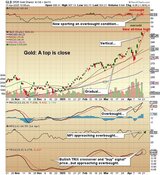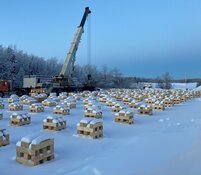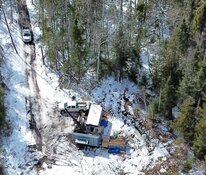Joe Mazumdar: Last year, risk aversion was a common market theme. In 2012, some of the same global economic concerns, such as the ongoing Eurozone crisis and the future of the euro, will continue to draw attention. But we also believe there is potential for positive economic indicators, primarily from the U.S., where there have been upticks in manufacturing and GDP growth. Also, unemployment in the U.S. is down to 8.5%, generating some consumer confidence. Recently, GDP growth for Q411 came in at 2.8%, which was slower than consensus forecasts—3%—but still the strongest in over a year.
Political factors will play a role in 2012. There could be a change in leadership among four of the five permanent members of the U.N. Security Council. The presidential election will be a key focus of the U.S. and global market. There are also presidential elections in Russia, France and Mexico. There also may be a changing of the guard in China in the latter part of 2012. The potential for changes in leadership in these key nations will generate a bid to market volatility in 2012.
Beyond gold and silver, our preferred commodity sectors include copper, iron ore and coal. Gold continues to be adversely affected by its own volatility, which continues to tarnish its reputation as a safe-haven asset. We note that during 2011, U.S. Treasury securities, the most liquid safe-haven asset, was a preferred recipient of capital investment, providing a ~10% return, its highest annual return since 2008 when it was 14%.
TGR: Will the strengthening American economy have an adverse effect on the gold price?
JM: Yes, the gold price quoted in U.S. dollars will be hindered by any U.S. dollar strength based on economic growth and increasing consumer confidence. In the current environment, gold, quoted in U.S. dollars, is still holding up well at price levels over $1,700/ounce (oz).
We note that the Federal Reserve said recently that it remains concerned about the "vigor" of U.S. economic growth and pledged to maintain low interest rates until at least 2014. The latter is a positive for gold prices.
In the medium to long term, increasing confidence levels in U.S. economic growth we believe will drive higher capital investments domestically and potentially raise inflation expectations, which would be a positive for gold.
TGR: What about silver and copper?
JM: We see copper on the brink of a rebound in 2012. The London Metals Exchange inventories are at low levels and Chinese imports of refined copper accelerated in the latter part of 2011. Copper is covered by Stefan Ioannou/Kerry Smith of Haywood Securities and they highlight a structural tightness in the copper market as supply growth remains constrained while a portion of future production growth resides in higher geopolitical risk jurisdictions. They note that the GFMS has estimated a deficit of 372 Kt copper in 2011 and forecast yet another deficit for 2012, 101 Kt.
Chris Thompson covers the silver sector for Haywood Securities and has commented that despite the growth in investment demand over the past five years, silver is still very much an industrial metal. Volatility, he believes, will be underpinned by potential contradictory moves by those who see silver as an industrial metal and others who seek it as an investment asset.
TGR: Did the junior mining sector hit bottom in 2011?
JM: Within the current cycle, I think it has hit bottom. For me, the question remains: What are the catalysts that will move individual stocks up within the sector?
For a number of the majors, growth has been increasingly difficult to achieve given the higher amounts of reserves they must replete on an annual basis. Companies such as Newmont Mining Corp. (NEM:NYSE) have been offering higher and more levered dividend payout structures to attract investors.
In 2012, we see the potential for more merger and acquisition (M&A) activity, specifically in the junior to intermediate sector, given the plethora of small-cap stories in the gold sector. Producers have performed better with respect to their paper in 2011, compared to development stocks, and boast healthier balance sheets. M&A activity will be driven not only by a desire for growth but also motivated by financing risk to capture any synergistic opportunities such as sharing infrastructure and the potential to merge critical skill sets. There is a paucity of people who can bring projects into production and operate them. Merging structures and management is very important right now in the junior and intermediate sector. Without it, a lot of these companies with development assets may continue to struggle.
TGR: Do you expect the Kinross Gold Corp. (K:TSX; KGC:NYSE, Not Rated) write-down to have an adverse effect on M&A?
JM: Large projects that are required to move the needle in the growth strategy of a large gold producer have a scale and scope that naturally expose them to significant execution risk. So, in a nutshell, escalating capital costs for projects of this magnitude are nothing new.
The M&A opportunities I refer to are at a scale that would be accretive to a junior to intermediate company from a growth perspective and offer opportunities to capture synergistic value. From a valuation perspective, many companies with development stage assets are trading well below their underlying asset valuations. M&A activity allows also for some consolidation in the junior sector given the plethora of small-cap gold plays.
TGR: Did you make any adjustments to your investment thesis following the dip in precious metals equities late in 2011?
JM: In our top picks, which we put out on Jan. 9, we focused on producers generating cash flow and developers with permitted or on a clear path-to-permitted projects in low geopolitical risk jurisdictions.
One pick was Midas Gold Corp. (MAX:TSX, Not Rated), whose flagship asset, the Golden Meadows project, hosts a global resource of 5.8 million ounce (Moz) in the Yellow Pine Stibnite area on a large land package (11,600 hectares) in west-central Idaho, a re-emerging gold district. The company is working toward an updated gold resource estimate before the end of Q112, leading to a preliminary economic assessment (PEA) by Q312.
TGR: Can you give us another name on your list?
JM: Yes, Midway Gold Corp. (MDW:TSX.V; MDW:NYSE.A, Sector Outperform, CA$3.25 Target Price). It has the Spring Valley gold project, an intrusive-hosted gold deposit with a global resource, we estimate at over 5 Moz, in a district close to Lovelock, Nevada, where Barrick Gold Corp. (ABX:TSX; ABX:NYSE, Sector Outperform, CA$61 Target Price), is earning in up to 70% by 2013 by cumulatively spending US$38M.
From a metallurgic perspective, the gold is free, not occluded in pyrite and potentially amenable to be economically extracted via a heap-leach process. Barrick, the joint-venture operator, is currently drilling the edges of the deposit to find out how big it could be. This means the near-term news flow will be linked to drilling results and less about a resource update in 2012.
Midway has a portfolio of projects that it is capable of bringing on-line. Its Pan project, a low strip open-pit, heap-leach gold project in Nevada, has submitted a completed bankable feasibility study and a plan of operations. Its Gold Rock project, only 8 kilometers from Pan, is in an earlier stage where we anticipate a resource by Q112 with additional drilling in Q2–Q312, leading to another resource update by Q412 and a PEA by 2013. Additionally, Midway is working a low-sulphidation, high-grade gold project in the Tonopah District.
Midway has a portfolio of projects and is assembling a team to build and operate them. Its COO, Ken Brunk, formerly with Newmont and Romarco, is very familiar with the permitting process and developing/operating projects in Nevada. I believe the company can manage this project pipeline of financeable projects in the low geopolitical risk jurisdiction of Nevada.
TGR: Your target price for Midway is $3.25, up $0.25 from your last report. With that many projects in the development stage, it seems that Midway would be a prime takeover target, especially given its joint venture with Barrick.
JM: Barrick is looking at a number of projects in Nevada, some of which are billion-dollar-plus projects that would add significant ounces to its production profile including Spring Valley, Goldstrike and an expansion at Turquoise Ridge. I believe that Spring Valley may be a target for Barrick going forward as it has potential to contain a +5 Moz global resource and lies in Nevada where Barrick has a significant infrastructure and asset base.
However, the other components of the company's portfolio, which include smaller open-pit, heap-leach projects, such as Pan and Gold Rock, that could potentially produce between 70–90 thousand ounces (Koz)/year, would not move the needle for most majors. These smaller projects do generate cash flow and are more readily financeable by a company the size of Midway. They could also be attractive to an intermediate operating group looking at accretive transactions with junior developers.
TGR: You cover Orvana Minerals Corp. (ORV:TSX, Sector Outperform, CA$2.25 Target Price), which is in production at its Don Mario mine in Bolivia and its El Valle-Boinás/Carlés (EVBC) mine in Spain. From June to October 2011, gold grades there increased incrementally from 1.4 to 2.17 grams per tonne (g/t). Nevertheless, Orvana's throughput at EVBC is below your forecast. Results at Don Mario in Bolivia also were below estimates. Is this a make-or-break year for Orvana?
JM: It is a critical year for the company. Bill Williams, formerly Orvana's vice president of corporate development, is now the CEO. He is an ex-Phelps Dodge vice president and has been instrumental in generating the revised technical reports on both operations, EVBC and Don Mario Upper Mineralized Zone (UMZ), while advancing the Copperwood project. We believe his appointment reflects the company's focus on getting the operations back on track.
Orvana is currently in the process of re-benchmarking both EVBC and Don Mario UMZ. For Don Mario—an open-pit mine with an upper mineralized zone containing a lot of copper, as well as gold and silver—Orvana has delivered a new life-of-mine forecast that addresses the difficulty of getting copper out using a leach precipitation flotation circuit on a much bigger scale than has been used before. The Don Mario operation also has been troubled by high costs of reagents for the circuit, which has raised the processing costs.
We had originally forecast an annual production profile of 10–15 Koz per year of gold and 10–15 million pounds (Mlb) of copper. We are now looking at a production profile of 9–10 Mlb copper and 8–9 Koz of gold, whereas Orvana is still signaling 13 Mlb of copper and 12 Koz of gold. In Q411, the Don Mario UMZ operation produced 2.5 Mlb of copper and 2.3 Koz of gold, which is a positive. Now, it has to consistently achieve its new benchmarks over the next few quarters so the market can gain confidence in its operational abilities.
At Orvana's flagship, the EVBC gold-copper project in northwest Spain, the operational issues have been related to head grades. Underground bottlenecks have hindered the company's ability to blend higher grade feed to the processing plant. We anticipate that a shaft will be in place by April/May 2012, which should alleviate some of the bottlenecks. We had originally forecast that the feed grade, at steady state levels, would be in the area of 5 g/t. However, revised guidance indicated that it would be lower, 3–3.5 g/t gold, which also conspired to lower our target. We anticipate a revised technical report for EVBC prior to March 2012 with updated life-of-mine forecasts.
Orvana's Copperwood project in upper Michigan is a 50 Mlb/year copper project, now in bankable feasibility study, and Orvana is seeking to permit this year. Even with up to 800 Mlb of copper reserves, we believe that the Copperwood asset is not being valued at its current price levels as Orvana has been heavily discounted in the market due to poor operational performance.
TGR: Given the lower recoveries and production estimates at Don Mario UMZ released in late January, you lowered your target price by $0.15 to $2.25. Yet you still give it a sector outperform rating. Why?
JM: Due to the heavy market discounting related to disappointing results from both operations over the past few quarters, Orvana still provides about a 100% return to our target from where it is trading right now. I continue to believe that management can redeem themselves by achieving the revised benchmarks consistently over the next few quarters. As Orvana meets its goals, I believe the market will appreciate the cash flow being generated, worry less about its working capital position and give the company credit for its advancement of the Copperwood project.
TGR: Prodigy Gold Inc. (PDG:TSX.V, Sector Outperform, CA$1.20 Target Price) recently published an updated PEA on its flagship Magino gold project in northern Ontario. Your model for Prodigy, using the updated PEA, projects a 20,000-ton/day operation, producing 222 Koz of gold per year over 13 years at total cash cost of roughly $775/oz. That would generate annual earnings before interest, taxes, depreciation and amortization margin of more than 50%. Yet, your target price of $1.20 is only about 40% above where Prodigy is trading. Why so conservative?
JM: Given that gold indices provided a negative return in 2011 ranging from 13% to 20%, I think that a positive 40% return to target is probably not conservative in the current market environment. With respect to the valuation, I have adjusted for the technical and execution risk of the study level (PEA) and the fact that I have modeled a larger mineable resource base than that used in the December 2011 PEA. As a company derisks the project from PEA to a feasibility study, I revise the multiples applied to the asset valuation.
Prodigy is planning a significant drill program of 60,000m in 2012 to infill/upgrade and expand the resource base while condemning areas for locating site facilities. We also anticipate an updated resource by Q312 leading to a feasibility study by Q412.
TGR: Do you expect a takeover offer for Prodigy?
JM: I try not to work off the takeover model because it is highly uncertain but focus on the underlying valuation. While I do believe that the Magino asset would be a good takeover candidate for an intermediate, I think that there are opportunities for consolidation and capturing some synergies with Richmont Mines Inc. (RIC:TSX; RIC:NYSE.A), which has an underground operation that abuts Prodigy's land package. Consolidation would probably be a good idea, given that Prodigy could have underground targets within the same host rocks as Richmont, which has a fully permitted and functional process plant.
TGR: In your last interview with The Gold Report, you talked about Revolution Resources Corp. (RV:TSX; RVRCF:OTCQX, Not Rated). You said it was looking for analogs of Romarco Minerals Inc.'s (R:TSX, Not Rated) Haile Deposit in the Carolina Slate Belt. What's happening with Revolution now?
JM: Revolution still occupies a significant land package of 7,500 acres along a 25-kilometer corridor within the Carolina Slate Belt at its Champion Hills Gold project in North Carolina. It drilled 19,150m in 2011 and is working on a resource estimate in 2012. Currently, gold equity plays exploring in the Carolina Slate Belt are strongly tied to news flow from Romarco's multimillion-ounce Haile gold development project in South Carolina and its ability to permit it. In an effort to diversify its portfolio, Revolution acquired a significant land package (~400,000 hectares) in two prospective regions in Mexico from Lake Shore Gold (LSG:TSX, Sector Outperform, CA$3.50 Target Price) in 2011. These assets host high-level low-sulphidation epithermal, gold and silver mineralization and we anticipate news flow from drilling results by Q1–Q212. The company wanted to present the market with multiple catalysts from a diversified asset base and this project has allowed it to achieve that goal.
TGR: In late December 2011, Eldorado Gold Corp. (ELD:TSX; EGO:NYSE, Sector Outperform, CA$19.00 Target Price), made a takeover bid for European Goldfields Ltd. (EGU:TSX; EGU:AIM), which has gold exploration and development properties in Greece, Turkey and Romania. Last year, you discussed Carpathian Gold Inc. (CPN:TSX, Sector Outperform, CA$0.90 Target Price) and its Rovina Valley copper-gold-porphyry project, which contains about 10.7 Moz gold equivalent in Romania's Golden Quadrilateral. Does the proposed European Goldfields takeover make Carpathian Gold more attractive to larger suitors?
JM: Barrick's private placement in August 2011 into Carpathian to fund additional drilling at Rovina Valley already speaks to the attractiveness of these gold rich porphyry systems to larger suitors. Mining activity in Romania is heavily linked to news flow on the permitting activities at Rosia Montana operated by Gabriel Resources Ltd. (GBU:TSX, Not Rated).
Eldorado Gold's proposed takeover bid for European Goldfields does put in a bid for assets in Europe, however, the majority of European Goldfields' assets are located in Greece (Olympias/Skouries) and less so in Romania (Certej). For me, the takeover trigger was related to the receipt of permits to develop its Greek projects in July 2011. Permitting of those projects took an extended period of time. A positive permitting environment in Europe bodes well for Carpathian at Rovina Valley and it will benefit from any positive news flow from Gabriel. The risks include royalty increases and potential free carried interest that the government wants to negotiate.
TGR: Royalties are going from 4% to 8%. That certainly is not positive, but to get those revenues the government has to permit the mines.
JM: Herein lies the rub. On Jan. 3, we lowered our target by $0.10 on Carpathian to $0.90 to accommodate an increase in the gold and copper royalties to 8% at Rovina Valley. However, on the positive side, by defining the mining royalty rates and the tax structure and negotiating a free carried interest, the Romanian government has shown its desire to have these companies invest in these projects and generate the revenue streams within a restructured rent-sharing framework. We note that the local government is also looking to privatize some state-owned mining assets to raise revenue.
TGR: What do analysts, investors and companies need to look out for in terms of geopolitical risk?
JM: I would highlight countries—emerging or developed—that are in economic dire straits with prospective geology whose mining sector is underdeveloped and has untested mining laws and poor infrastructure. Geopolitical risk carries a few facets including outright expropriation to creeping nationalism, which is linked inextricably to a company's ability to develop/permit the project. These countries will continue to seek foreign direct investment to explore/develop these assets. Outright expropriation is difficult in countries where there is no mining history and a paucity of critical skill sets locally, unless of course it is looking to sell the asset to another bidder. Alternatively, the country may alter its mining laws to increase its share of resource rents derived from the exploitation of these assets. We have observed higher rent sharing globally via increased royalty payments, higher taxes and/or the introduction of windfall tax structures in countries such as Peru, Argentina and Romania, to name a few.
Assets in higher geopolitical risk jurisdictions must provide the investor a high return and quick payback commensurate with the elevated risk profile. Note that assets within higher geopolitical risk jurisdictions may be more difficult to finance and there may be a limit on potential takeover suitors, depending on their risk appetite. To properly risk adjust and quantify these uncertainties remains a challenge.
TGR: Is that because it is not going away?
JM: Let's not forget that mining is a great way to get an injection of direct investment into an economy and generate employment. For example, high rates of unemployment in developed countries such as the U.S. and European countries are driving mining activity in places where permits have historically been difficult to attain.
TGR: Joe, thank you for your time and your insights.
Joe Mazumdar is a senior mining analyst with Haywood Securities in Vancouver. Previously, he served as director of strategic planning at Newmont Mining and was the senior market analyst for Phelps Dodge. He has held a variety of geologist positions with other mining companies including RTZ, MIM, North and IAMGold working in South America, Australia and Canada, rounding out ~20 years industry experience. He holds a Bachelor of Science in geology from the University of Alberta, Canada, a Master of Science in exploration and mining from James Cook University, Australia, and a Master of Science in mineral economics from the Colorado School of Mines, U.S.
Want to read more exclusive Gold Report interviews like this? Sign up for our free e-newsletter, and you'll learn when new articles have been published. To see a list of recent interviews with industry analysts and commentators, visit our Exclusive Interviews page.
DISCLOSURE:
1) Brian Sylvester of The Gold Report conducted this interview. He personally and/or his family own shares of the following companies mentioned in this interview: None.
2) The following companies mentioned in the interview are sponsors of The Gold Report: Orvana Mineral Corp., Prodigy Gold Inc., Revolution Resources Corp. Streetwise Reports does not accept stock in exchange for services.
3) Joe Mazumdar: I personally and/or my family own shares of the following companies mentioned in this interview: None. I personally and/or my family am paid by the following companies mentioned in this interview: None. I was not paid by Streetwise for participating in this story.
4) As of the end of the month immediately preceding this publication either Haywood Securities, Inc., one of its subsidiaries, its officers or directors beneficially owned 1% or more of Midway Gold Corp. (MDW:TSX.V).
5) Haywood Securities Inc. or one of its subsidiaries has managed or co-managed or participated as selling group in a public offering of securities for Carpathian Gold Inc. (CPN:TSX), Midway Gold Corp. (MDW:TSX.V) and Orvana Minerals Corp. (ORV:TSX) in the past 12 months.








































